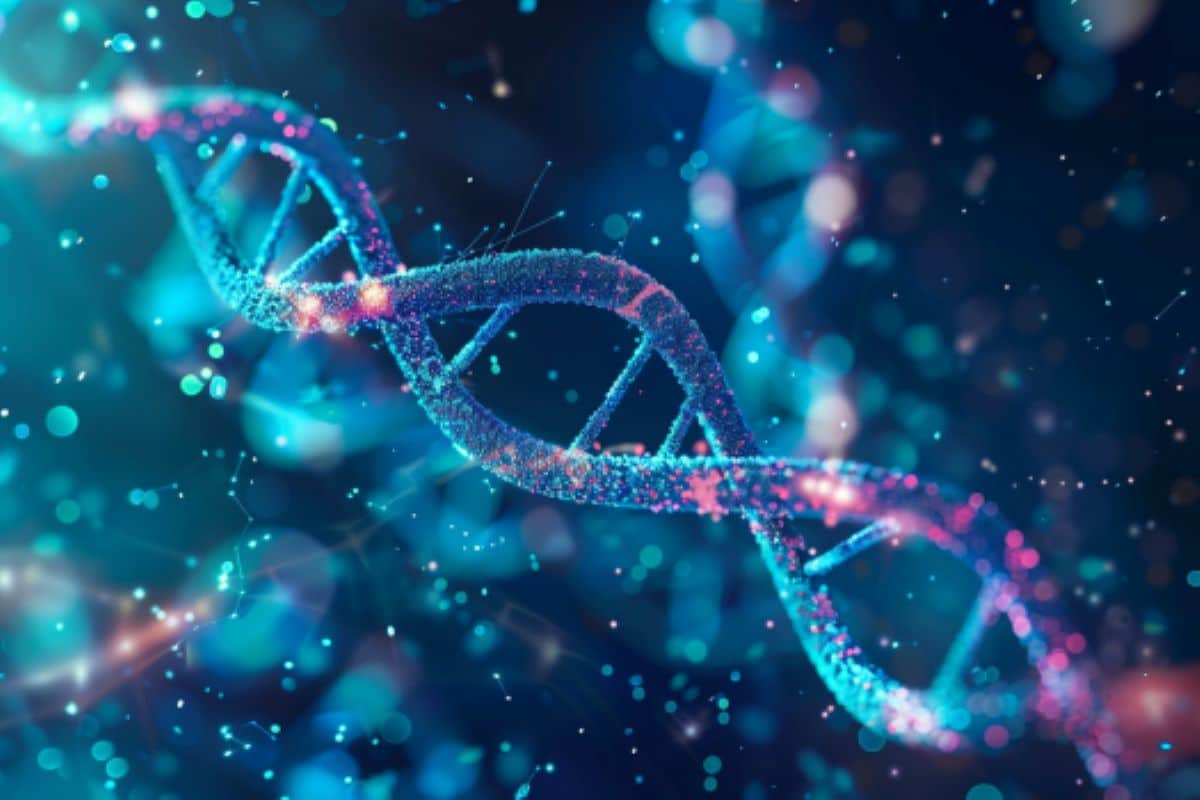Summary: Researchers developed an innovative epigenome editing platform that enables precise programming of epigenetic modifications across the genome. This technology uses CRISPR to target and modify chromatin, facilitating detailed studies on how these changes affect gene expression.
By employing this system, the researchers have discovered new roles for chromatin modifications, challenging previous assumptions about their effects on transcription. This breakthrough tool not only deepens our understanding of gene regulation but also opens new avenues for precision medicine by allowing for the controlled modification of gene activity.
Key Facts:
- Innovative Platform: The new system allows for the precise application of epigenetic modifications to any genomic location, utilizing CRISPR technology for targeted editing.
- Discovery of New Gene Regulation Mechanisms: Initial findings reveal that certain chromatin marks, such as H3K4me3, previously thought to be byproducts of transcription, can actively enhance gene expression when added to specific DNA regions.
- Potential for Precision Medicine: This technology paves the way for potential applications in disease treatment, where targeted epigenetic modifications could regulate gene activity specific to individual patient needs.
Source: EMBL
Understanding how genes are regulated at the molecular level is a central challenge in modern biology. This complex mechanism is mainly driven by the interaction between proteins called transcription factors, DNA regulatory regions, and epigenetic modifications – chemical alterations that change chromatin structure.
The set of epigenetic modifications of a cell’s genome is referred to as the epigenome.
In a study just published in Nature Genetics, scientists from the Hackett Group at EMBL Rome have developed a modular epigenome editing platform – a system to program epigenetic modifications at any location in the genome.

The system allows scientists to study the impact of each chromatin modification on transcription, the mechanism by which genes are copied into mRNA to drive protein synthesis.
Chromatin modifications are thought to contribute to the regulation of key biological processes such as development, response to environmental signals, and disease.
To understand the effects of specific chromatin marks on gene regulation, previous studies have mapped their distribution in the genomes of healthy and diseased cell types.
By combining this data with gene expression analysis and the known effects of perturbing specific genes, scientists have ascribed functions to such chromatin marks.
However, the causal relationship between chromatin marks and gene regulation has proved difficult to determine.
The challenge lies in dissecting the individual contributions of the many complex factors involved in such regulation – chromatin marks, transcription factors, and regulatory DNA sequences.
Scientists from the Hackett Group developed a modular epigenome editing system to precisely program nine biologically important chromatin marks at any desired region in the genome.
The system is based on CRISPR – a widely used genome editing technology that allows researchers to make alterations in specific DNA locations with high precision and accuracy.
Such precise perturbations enabled them to carefully dissect cause-and-consequence relationships between chromatin marks and their biological effects.
The scientists also designed and employed a ‘reporter system’, which allowed them to measure changes in gene expression at single-cell level and to understand how changes in the DNA sequence influence the impact of each chromatin mark.
Their results reveal the causal roles of a range of important chromatin marks in gene regulation.
For example, the researchers found a new role for H3K4me3, a chromatin mark that was previously believed to be a result of transcription. They observed that H3K4me3 can actually increase transcription by itself if artificially added to specific DNA locations.
“This was an extremely exciting and unexpected result that went against all our expectations,” said Cristina Policarpi, postdoc in the Hackett Group and leading scientist of the study.
“Our data point towards a complex regulatory network, in which multiple governing factors interact to modulate the levels of gene expression in a given cell. These factors include the pre-existing structure of the chromatin, the underlying DNA sequence, and the location in the genome.”
Hackett and colleagues are currently exploring avenues to leverage this technology through a promising start-up venture. The next step will be to confirm and expand these conclusions by targeting genes across different cell types and at scale.
How chromatin marks influence transcription across the diversity of genes and downstream mechanisms, also remains to be clarified.
“Our modular epigenetic editing toolkit constitutes a new experimental approach to dissect the reciprocal relationships between the genome and epigenome,” said Jamie Hackett, Group Leader at EMBL Rome.
“The system could be used in the future to more precisely understand the importance of epigenomic changes in influencing gene activity during development and in human disease.
“On the other hand, the technology also unlocks the ability to program desired gene expression levels in a highly tunable manner. This is an exciting avenue for precision health applications and may prove useful in disease settings.”
What is chromatin?
Inside the cell’s nucleus, DNA is wrapped around positively charged proteins called histones that strongly adhere to the negatively charged DNA. The individual units of DNA with accompanying histones are called nucleosomes, which assemble in a highly ordered structure, called chromatin.
Chromatin structure is known to play a major role in gene regulation, since it influences the accessibility of DNA regulatory regions to transcription factors, proteins that help turn gene expression on or off.
However, the extent to which chemical modifications of DNA and histones, collectively referred to as ‘chromatin marks’, contribute to transcription regulation has so far remained unclear.
About this CRISPR and epigenetics research news
Author: Rossana De Lorenzi
Source: EMBL
Contact: Rossana De Lorenzi – EMBL
Image: The image is credited to Neuroscience News
Original Research: Open access.
“Systematic epigenome editing captures the context-dependent instructive function of chromatin modifications” by Cristina Policarpi et al. Nature Genetics
Abstract
Systematic epigenome editing captures the context-dependent instructive function of chromatin modifications
Chromatin modifications are linked with regulating patterns of gene expression, but their causal role and context-dependent impact on transcription remains unresolved.
Here we develop a modular epigenome editing platform that programs nine key chromatin modifications, or combinations thereof, to precise loci in living cells.
We couple this with single-cell readouts to systematically quantitate the magnitude and heterogeneity of transcriptional responses elicited by each specific chromatin modification.
Among these, we show that installing histone H3 lysine 4 trimethylation (H3K4me3) at promoters can causally instruct transcription by hierarchically remodeling the chromatin landscape.
We further dissect how DNA sequence motifs influence the transcriptional impact of chromatin marks, identifying switch-like and attenuative effects within distinct cis contexts.
Finally, we examine the interplay of combinatorial modifications, revealing that co-targeted H3K27 trimethylation (H3K27me3) and H2AK119 monoubiquitination (H2AK119ub) maximizes silencing penetrance across single cells.
Our precision-perturbation strategy unveils the causal principles of how chromatin modification(s) influence transcription and dissects how quantitative responses are calibrated by contextual interactions.






